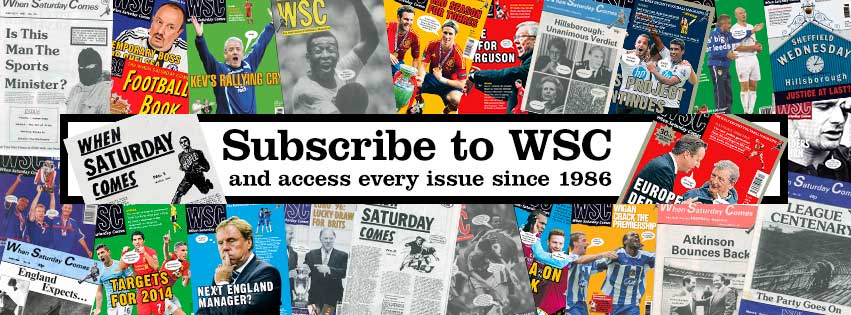The first player from his country to play in the Premier League, the striker became a cult hero among fans despite injury problems in his seven years on the south coast
8 October ~ “I remember my first game at Coventry. I received the ball, put my head up and boom, I was without the ball.” So did Marian Pahars, announced in the press as “the Latvian Michael Owen”, look back on his first game in English football after joining Southampton. Initially denied a work permit in January 1999, Pahars officially signed two months later after Saints appealed. The 22-year-old striker was the first of half a dozen players from his country to be signed by English clubs on the recommendation of Gary Johnson, who was then acting as a coaching advisor to the Latvian FA and later took charge of the national team. (Bristol Rovers midfielder Vitalis Astafijevs was the only one aside from Pahars who would go to play more than 100 League games.)
The club Pahars moved from, Skonto Riga, were dominating their domestic league while drawing average crowds of around 1,000, so it’s understandable that he would take time to adapt to the pressures of the Premier League, a process also hindered initially by his lack of English. He settled quickly, however, scoring his first goal in a 3-3 draw against relegation rivals Blackburn then making a decisive contribution in the final game of the season at home to Everton. With Saints two points ahead of 18th-placed Charlton, a 2-0 win secured their safety with Pahars scoring both goals. The euphoria this produced at The Dell came as a surprise to him, as he later revealed that he hadn’t realised there was any relegation from the Premier League.
Before long fans were singing his name to the tune of Kumbaya and he was to be Southampton’s leading scorer in 1999-2000 with 13 goals. The best-remembered was a strike at Old Trafford, voted “Goal of the Month” on Match of the Day, when he nutmegged Jaap Stam to give Saints the lead in a match that ended 3-3. While Pahars rarely scored from outside the penalty area, he hit a 25-yarder in another 3-3 draw versus Derby at The Dell in 1999, a strike he later picked as his favourite career goal.
In the early 2000s he developed an effective partnership with James Beattie, the pair scoring 30 goals between them in 2001-02. One of these was the only goal against Charlton in November 2001 to give Saints a long-awaited first win at St Mary’s following their move from The Dell.
The following season, beset by ankle injuries which numerous operations couldn’t correct, Pahars lost his place to new signing Brett Ormerod. Still, his first goal of 2003-04 – and in more than a year – was spectacular, a right-footer into the bottom corner in a 3-0 win at home to Portsmouth in December.
Fitness problems caused by lack of playing time meant that Pahars only featured as a substitute in Latvia’s three group matches at Euro 2004, still the country’s only appearance in a major finals.
Saints went down the following season under Harry Redknapp, the seventh manager Pahars had played under in six years at the club. Having hoped to be offered a pay-to-play deal, he was instead released in 2006 by the next permanent boss, George Burley, and wound down his career in Cyprus and back home in Latvia. Pahars remains a hugely popular figure in his homeland, notwithstanding an often fraught four years in charge of the national team which included a 2-0 home defeat to the Faroe Islands in 2016.
His standing at Southampton is reflected in the fact that Matt Le Tissier included Pahars in an XI of the best footballers he had played with while at Southampton.
Photos: Marian Pahars playing for Southampton against Manchester United in January 2002 (Getty); celebrating one of his two goals against Everton that kept Saints up in 1999 (Getty); taking the acclaim of team-mates after his goal against Derby in October 1999 (Getty); climbing out of the crowd after scoring in the first St Mary’s home win in November 1999 (Getty); scoring in the derby victory against Portsmouth in 2003 (Getty); challenging Jaap Stam for the ball during Euro 2004 (Getty); on the touchline as head coach of Latvia against the Netherlands in 2015 (Getty).
This article first appeared in WSC 391, October 2019. Subscribers get free access to the complete WSC digital archive – you can find out more here
